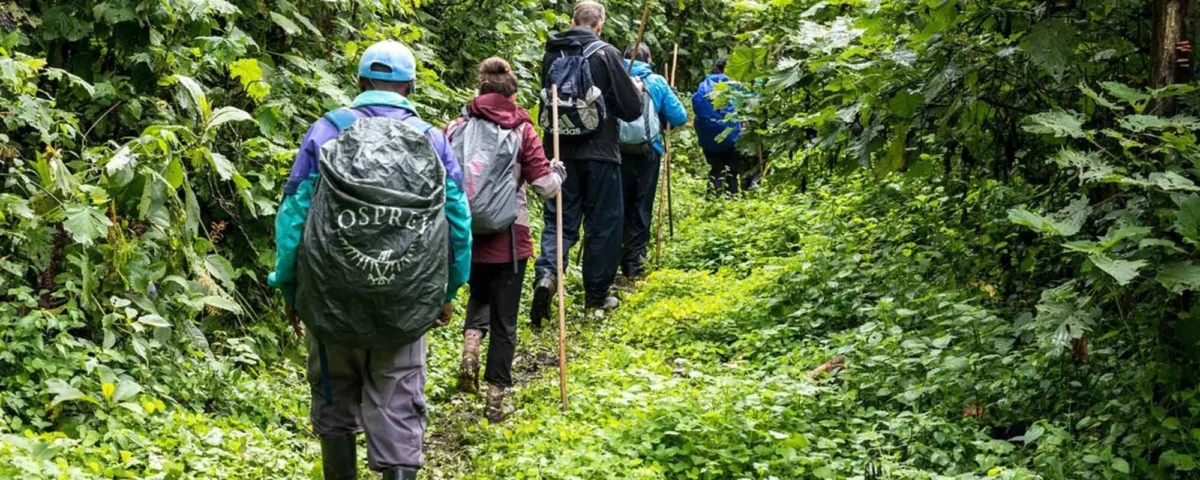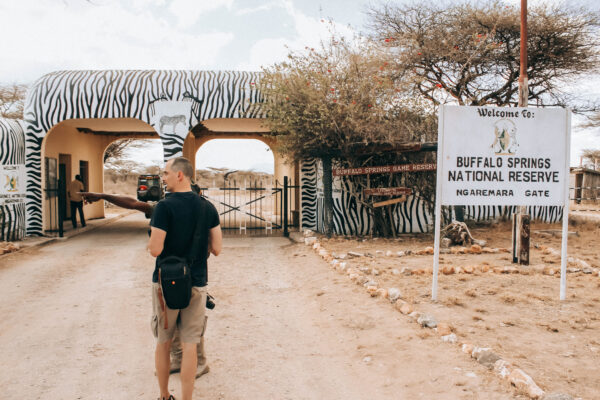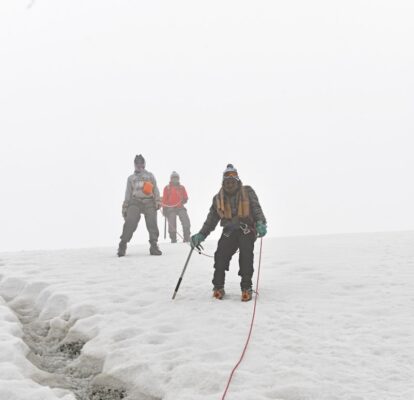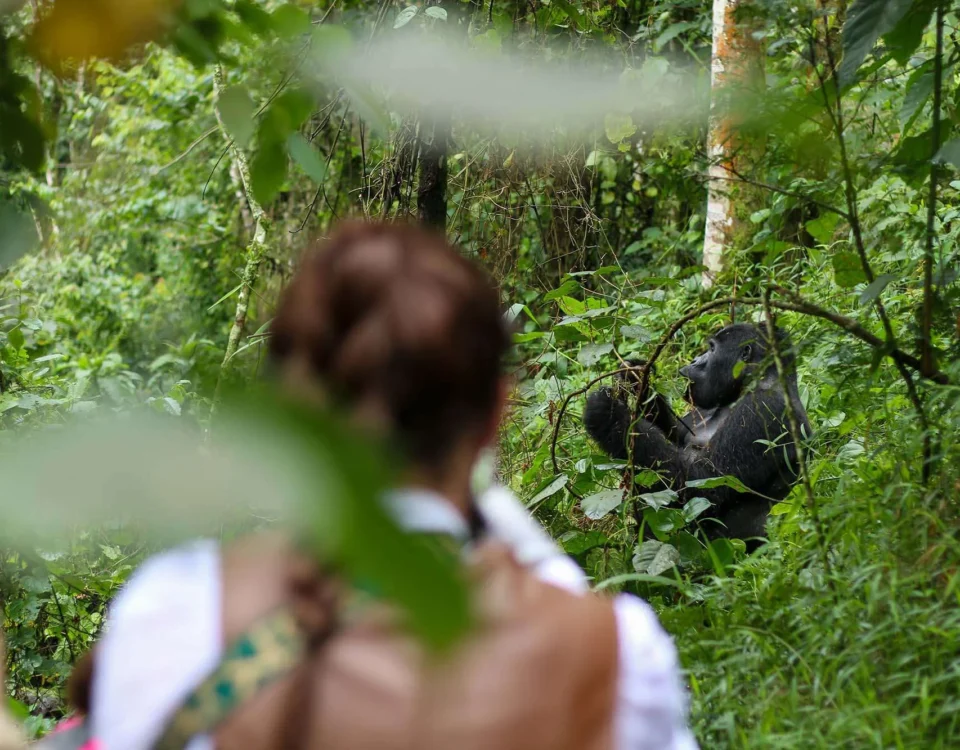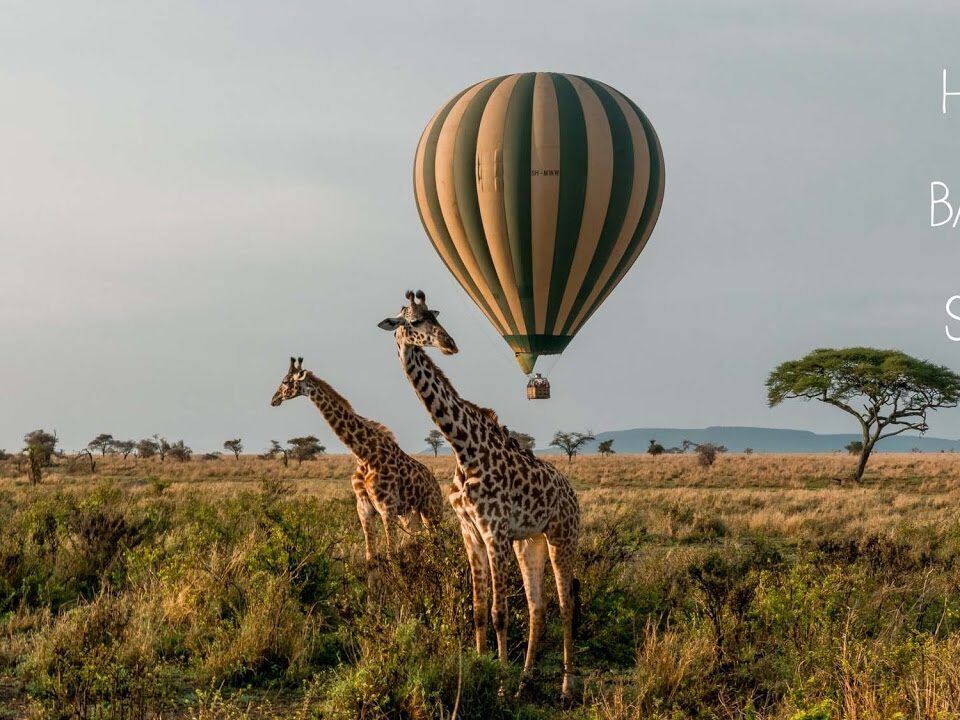Are You Guaranteed to See Gorillas in Uganda?
November 11, 2024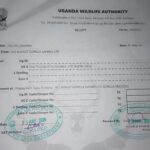
How Do I Book a Gorilla Trekking Permit in Uganda?
November 14, 2024How Difficult is Gorilla Trekking in Bwindi Impenetrable Forest?
How Difficult is Gorilla Trekking in Bwindi Impenetrable Forest? Gorilla trekking in Uganda’s Bwindi Impenetrable Forest is one of Africa’s most exhilarating and challenging wildlife experiences, allowing travelers to encounter endangered mountain gorillas in their natural habitat. Managed by the Uganda Wildlife Authority, Bwindi is home to nearly half of the world’s remaining mountain gorillas, making it a premier destination for wildlife enthusiasts. Yet, the adventure is not for the faint-hearted, as it involves traversing rugged terrains and dense vegetation at high altitudes. In this comprehensive guide, we will explore what makes gorilla trekking in Bwindi challenging, what you can expect from the experience, and the logistics, including trekking and habituation permits.
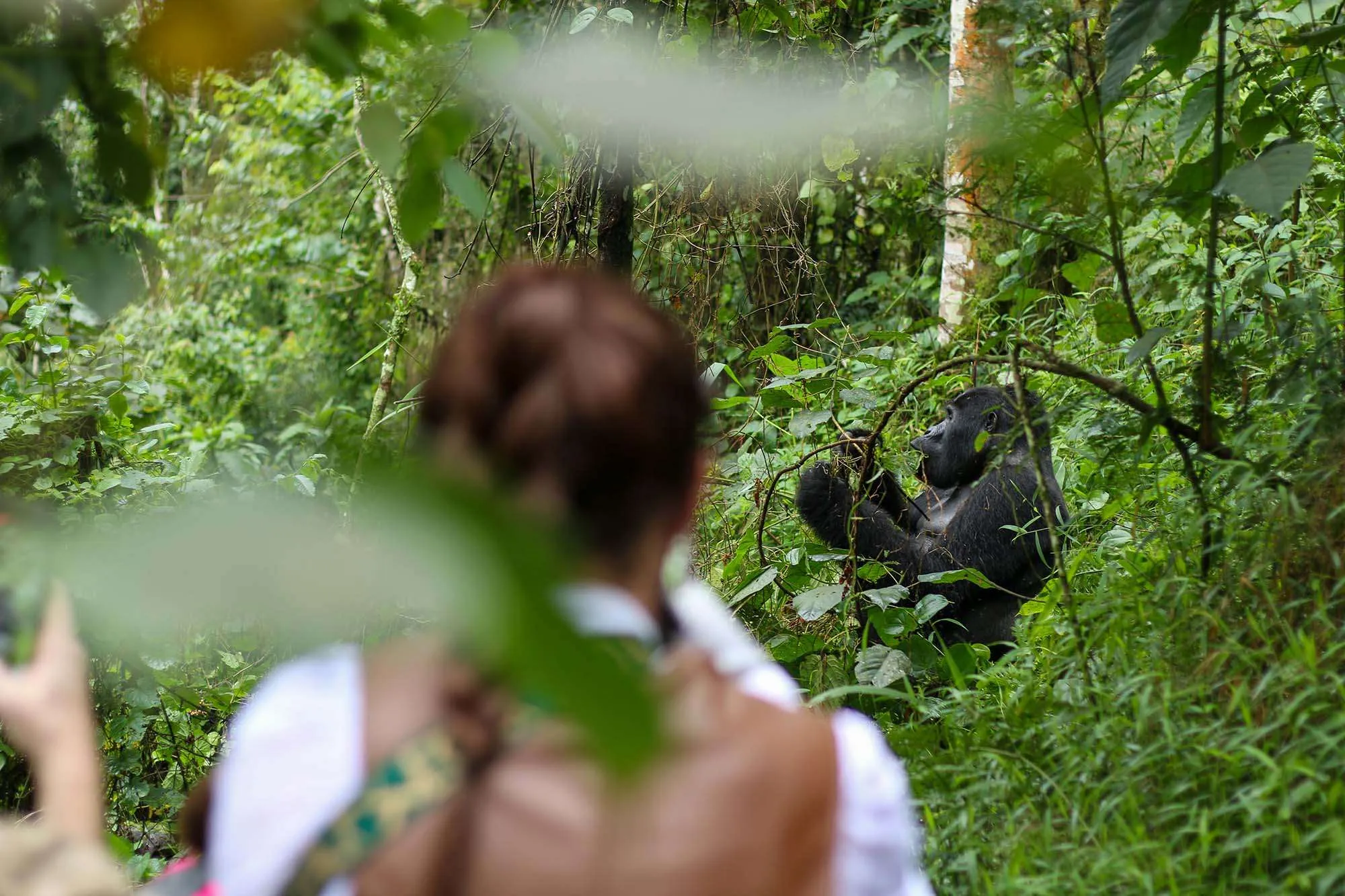
How Difficult is Gorilla Trekking in Bwindi
Why is Gorilla Trekking in Bwindi Challenging?
Rugged and Varied Terrain
Bwindi Impenetrable Forest is aptly named: this ancient rainforest spans approximately 331 square kilometers and is known for its dense foliage, steep hills, and narrow paths. Trekking through Bwindi requires navigating a variety of terrains, including muddy trails, dense undergrowth, and sharp inclines. The forest’s dense vegetation provides natural cover for the gorillas but also makes navigation tricky for trekkers. The terrain ranges from gentle slopes to steep hills, and hikers must be prepared for both uphill and downhill journeys.
The rugged terrain makes physical fitness essential for the trek. Hikers should expect to spend between 2 and 8 hours on the trail, depending on the location of the gorilla family. The gorillas move freely throughout their habitat, and rangers must track their movements each day to determine their location. As a result, each trek is different, and there’s no way to predict the exact difficulty level until the trek begins.
Altitude and Humidity
Bwindi Impenetrable Forest sits at an altitude of between 1,160 and 2,600 meters above sea level. This altitude can pose a challenge for those unaccustomed to high-elevation activities, as the air becomes thinner, and breathing can be more difficult, especially when combined with physical exertion. Furthermore, Bwindi’s tropical climate means high humidity levels, which can make the trek feel even more strenuous. Trekkers should be prepared to sweat and feel the effects of the forest’s heavy, moist air, which can quickly lead to fatigue.
The combination of altitude and humidity requires trekkers to pace themselves and stay hydrated. Many guides recommend acclimatizing to the altitude before beginning the trek, especially for those who may be prone to altitude sickness. Additionally, carrying lightweight, moisture-wicking clothing can help with the added humidity.
Time and Distance of Trekking
Each gorilla trek in Bwindi is unique, as the exact duration depends on the location of the gorilla families that day. On average, trekkers can expect to hike for anywhere from 2 to 8 hours, covering 2 to 10 kilometers of rugged terrain. While it is possible to encounter a gorilla family within the first hour, there’s also the possibility of spending most of the day on the move.
For the standard gorilla trekking permit, visitors are allowed up to one hour with the gorillas once they are located. For those participating in the gorilla habituation experience, which is exclusive to the Rushaga sector of Bwindi, the encounter can extend to four hours, though this longer interaction also adds to the physical demands of the day.
Understanding Gorilla Trekking and Habituation Permits in Uganda
A crucial aspect of planning your trek in Bwindi involves obtaining a permit, which provides essential support for gorilla conservation and community initiatives. Uganda offers two primary permits: the standard gorilla trekking permit and the gorilla habituation permit. Each permit type differs in terms of cost, residency eligibility, and the length of time visitors can spend with the gorillas.
| Experience | Visitor Category | Permit Cost |
| Gorilla Trekking Permit | Foreign Non-Residents | $800 per person |
| Foreign Residents | $700 per person | |
| African Citizens (Non-East Africa) | $500 per person | |
| East African Citizens | UGX 300,000 per person | |
| Gorilla Habituation Permit | Foreign Non-Residents | $1,500 per person |
| Foreign Residents | $1,000 per person | |
| African Citizens (Non-East Africa) | $1,000 per person | |
| East African Citizens | UGX 750,000 per person |
Gorilla Trekking vs. Gorilla Habituation: Key Differences
The main difference between the two permit types lies in the amount of time spent with the gorillas. The standard trekking permit provides up to one hour of gorilla observation, which is typically enough for most travelers to witness gorilla family interactions. The gorilla habituation permit, on the other hand, offers a more in-depth experience, allowing visitors to spend up to four hours with a family that is still undergoing the habituation process. This option is ideal for those who want a longer and more intimate interaction, providing unique insights into gorilla behavior.
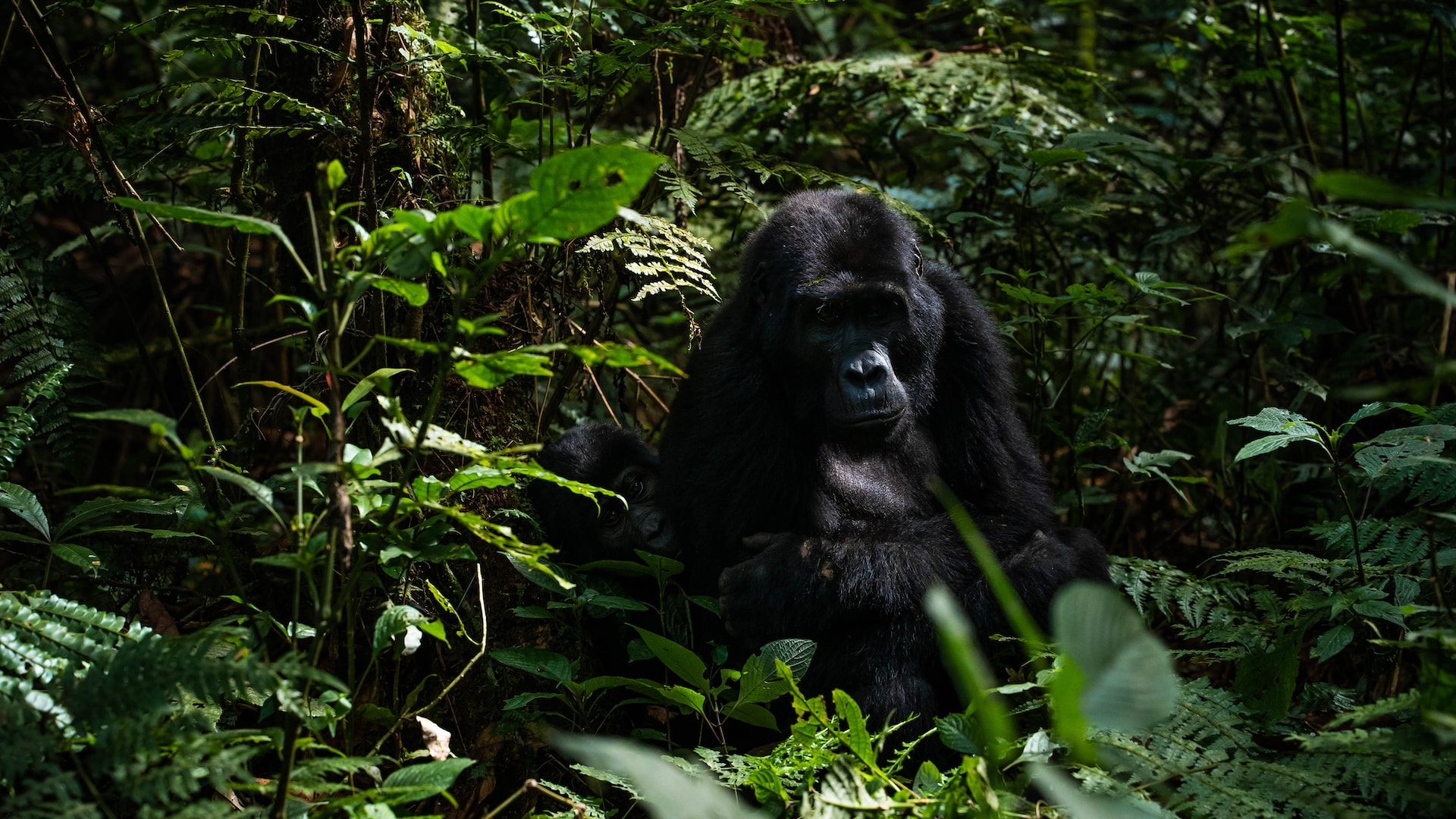
Uganda Gorilla Trekking
What to Expect During the Trek
Early Start and Briefing
Gorilla treks in Bwindi begin early in the morning, usually around 7:30 a.m., with a mandatory briefing at the park headquarters. During this briefing, park rangers provide safety guidelines, trekking tips, and an overview of what to expect. Trekkers are divided into small groups of eight (for standard treks) or four (for habituation experiences) and assigned to a specific gorilla family.
Guided Trekking and Tracking Gorillas
After the briefing, trekkers set out with a team of park rangers, trackers, and porters who assist in carrying equipment and navigating the forest’s dense trails. The park’s expert trackers are invaluable, as they use their knowledge of gorilla habits and previous tracking information to locate the gorillas. The journey through the forest varies, with some groups encountering gorillas within a few hours, while others may hike for most of the day.
Gorilla Encounter and Observing Behavior
Once the gorilla family is located, the trekking group is permitted to approach the gorillas within a safe distance. During the one-hour or four-hour period, depending on the permit type, trekkers can observe the gorillas’ natural behaviors, such as grooming, feeding, playing, and interacting with one another. This time offers a profound connection to the wild and an unmatched opportunity for wildlife photography.
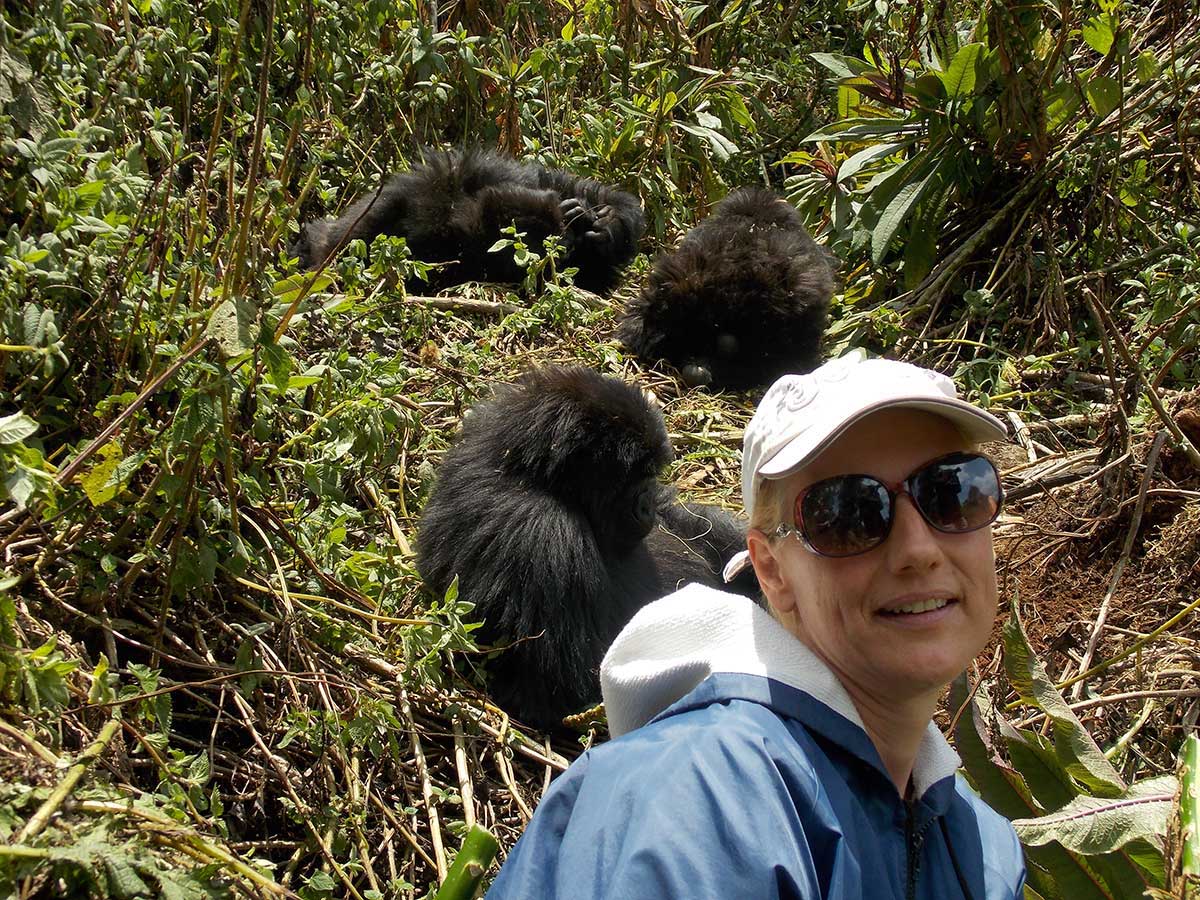
Uganda Gorilla Trekking Safari
Tips for a Successful Trekking Experience
Physical Preparation
Given Bwindi’s challenging conditions, physical fitness is essential. Regular cardio workouts, strength training, and uphill walking exercises can prepare trekkers for the demands of the trail. Additionally, staying well-hydrated and bringing energy-boosting snacks can help combat fatigue during the hike.
Suitable Gear
Proper clothing and equipment are crucial for a comfortable trekking experience. Essential gear includes sturdy hiking boots with good ankle support, waterproof clothing, gloves (to protect against prickly vegetation), and a lightweight backpack for carrying water and essentials. Trekking poles are also recommended, as they provide stability on steep slopes and uneven ground.
Hiring a Porter
Hiring a porter is a valuable option for those looking to ease the burden of the hike. For a small fee, porters assist with carrying gear and providing additional support on challenging parts of the trail. This service not only enhances the trekking experience but also supports local employment in the Bwindi region.
Conservation and Community Impact of Gorilla Permits
The fees collected from gorilla trekking and habituation permits contribute directly to gorilla conservation and the local economy. Gorilla trekking is a low-impact, high-value tourism activity, designed to limit the environmental footprint while generating significant revenue. A portion of the permit fees goes to the Uganda Wildlife Authority for park management, anti-poaching initiatives, and habitat conservation. Additionally, local communities benefit from tourism revenue, which funds schools, healthcare, and infrastructure projects, creating a sustainable relationship between conservation and development.
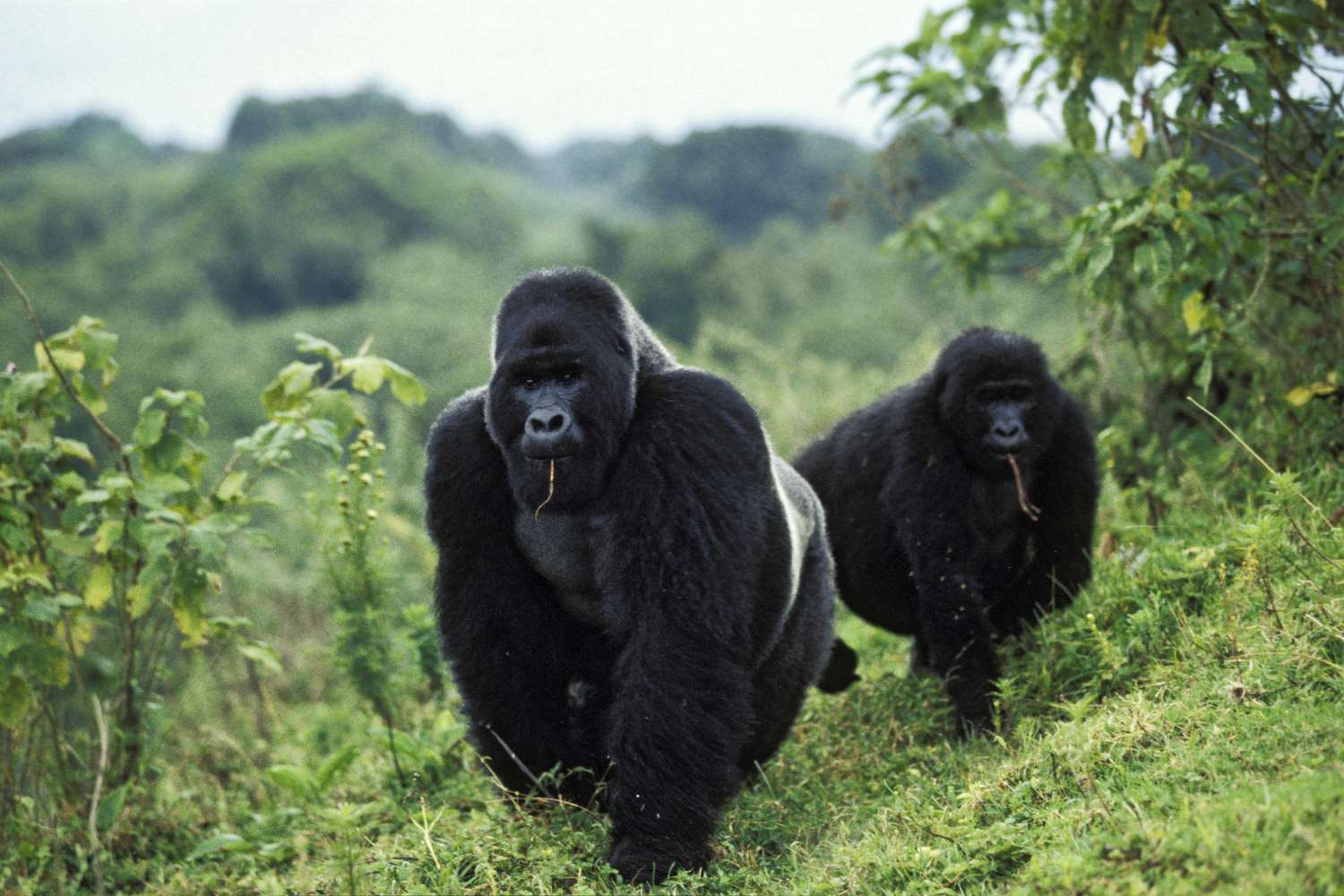
How Difficult is Gorilla Trekking in Bwindi
Planning Your Gorilla Trek with Jackal Adventures Ltd
Gorilla trekking in Bwindi Impenetrable Forest is both a physically demanding and profoundly rewarding experience. From navigating challenging terrain to observing the awe-inspiring mountain gorillas in their natural habitat, the trek requires preparation, commitment, and a spirit of adventure. The two types of permits, standard gorilla trekking and habituation, cater to varying interests and budgets, allowing visitors to select the experience that best suits their preferences.
For travelers eager to embark on this once-in-a-lifetime adventure, Jackal Adventures Ltd offers expert guidance in securing permits, planning logistics, and ensuring a smooth and memorable journey into the heart of Bwindi. Our experienced guides and network of local contacts make us a trusted partner in delivering an unforgettable gorilla trekking experience, whether it’s a standard trek or an immersive habituation encounter. Contact Jackal Adventures Ltd today to book your gorilla trekking adventure and experience the thrill of Bwindi’s wild beauty.


